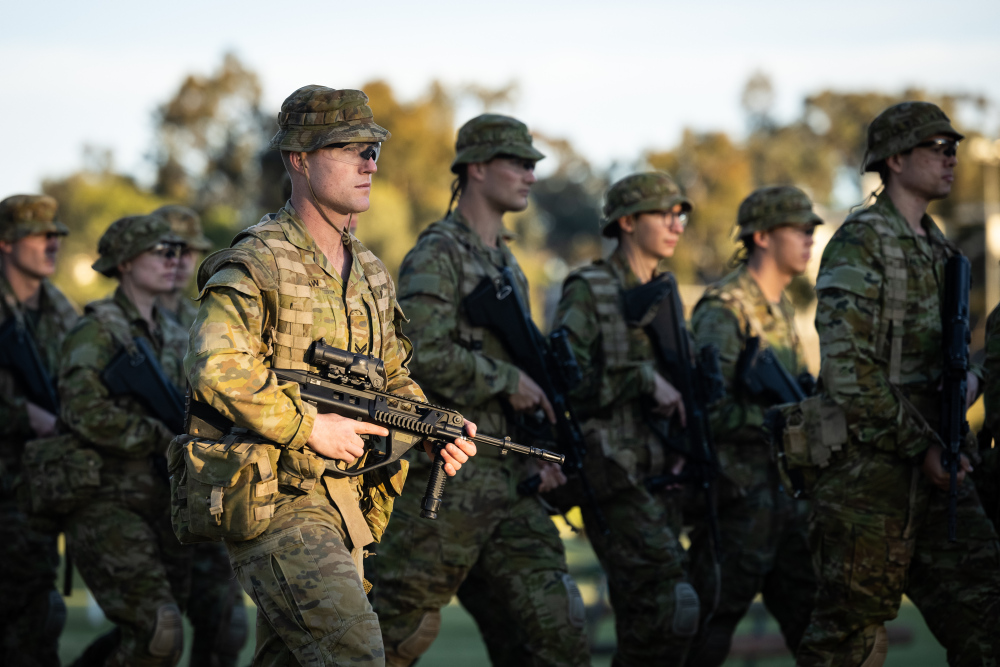“To be prepared for war is one of the most effective means of preserving peace.”
George Washington
Introduction
The government’s recent political announcement to expand the Australian Defence Force by 20,000 personnel is welcomed. To be a significant ‘land power’ deterrent, the Army will need the capability to expand numbers quickly with trained soldiers. Swiss history confirms the need for middle power nations to have a capable reserve force to mobilise in response to national security contingencies. The Swiss can mobilise a force of over 100,000 from a population of less than nine million.
During my MSc thesis, I studied the work of the American economist and Nobel Prize recipient Gary S Becker, Human Capital, A Theoretical and Empirical Analysis with Special Reference to Education. Becker’s work proves that investment in human capital reaps comparable dividends to a nation as investments in infrastructure and machinery. Specifically, human capital investments in education and training develop individual skills that increase capacity and productivity in the national interest.
The ADF should develop a ‘land force’ mobilisation capability by investing more effectively in military and vocational training to achieve a competent Active Reserve Force that increases tangible benefits for the nation. To this end, the following remarks are offered to enhance the future mobilisation capacity and capability of the Army with trained ‘boots on the ground’.
Basic Training
- The number of the ‘Army’s 35 days Reserve Training Course’ should be substantially increased to meet mobilisation requirements.
- Training teams should be established in each State to conduct courses for volunteers between 18 and 30 years of age. State based training would ensure that essential infrastructure and staffing are in place for future ‘Call Up’ expansion.
- The motivating factor for recruits, who successfully complete their initial 35-day training course and annual reserve obligation in the subsequent five years, will be no Higher Education Contribution Scheme (HECS) or Vocational Education Training (VET) debt and the tax free pay received as a reserve soldier.
- Some reservists may choose to leave after five years. However, until the age of 40, many will still have the experience, fitness and capacity to be Called Up with minimum extra training.
The target recruitment group for Basic Training should be those who meet enlistment standards and are:
- Year 12 or ‘Gap Year’ students who intend to continue their University or VET studies,
- Current students accumulating a HECS or VET debt,
- Graduates who may wish to clear their HECS or VET debt, and
- Any volunteers between 18 and 30 years of age.
Officer Training
- Qualified candidates who successfully complete the ‘Army’s 35 days Reserve Training Course’ should be given the opportunity to proceed to an officer training course that enables a State graduation every six months.
- Successful reserve officer candidates would be paid an Undergraduate Allowance at a rate similar to those attending ADFA.
- The motivating factor for trainees who successfully complete their Officer Training and meet their annual reserve obligation would be:
- The Undergraduate Allowance,
- The HECS or VET debt reduced to zero, and
- The tax free pay received as a reserve officer, when undertaking reserve training.
The target recruitment group for Officer Training should be:
- All suitable year 12 or ‘Gap Year’ students. The students must also meet the admission requirements to an Australian universities preferably in the medical, engineering, computing, science and logistic fields, or VET studies,
- Any current under graduates who would benefit from an Undergraduate Allowance and a HECS or VET debt reduced to zero, and
- Volunteers or current serving ADF members, younger than 30 years of age, qualified to undertake Officer Training and who want to be an Army Reserve Officer.
Community Engagement
Community engagement and public support is critical to reinforce to ‘marching out’ recruits that their effort and commitment to protect the nation is valued.
- To attract future recruits, local ‘march out’ parades should be conducted in each State,
- ‘Graduation’ parades should be attended by families, friends and dignitaries, conducted in prominent venues, and advertised to attract general public attendance.
Conclusion
By investing more effectively in military and vocational training, the ADF can become the ‘land power’ deterrent envisaged by government. The success of the recruiting program proposed here, however, will depend on the existence of a targeted marketing effort associated with the incentives to attract suitable fit young men and women. It will also require new thinking by those tasked to deliver Army’s workforce management outcomes.
This article is an entry in the 2022 AARC Short Writing Competition, 'Transforming Land Power'.



